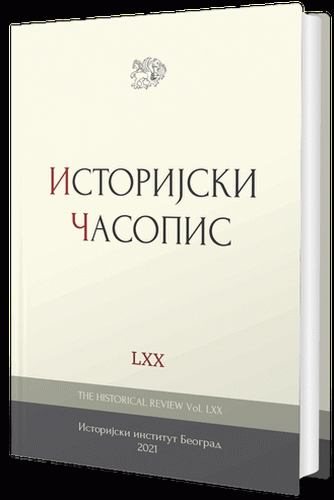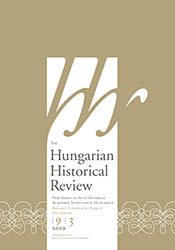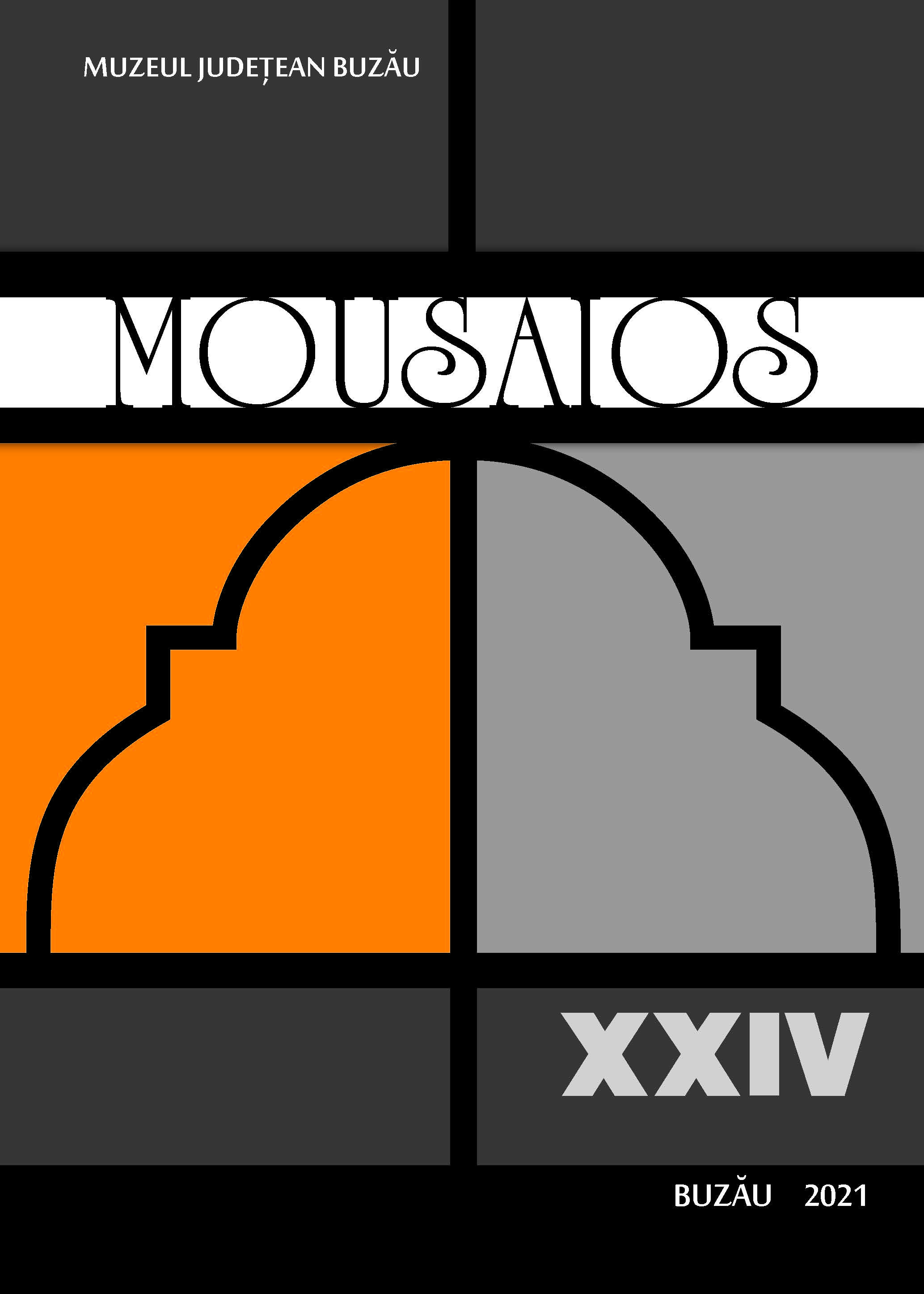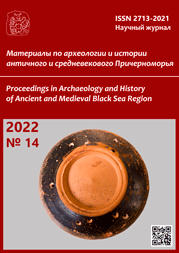
Tornyok harca a középkori Rómában
Alberto di Santo: Guerre di torri. Violenza e conflitto a Roma tra 1200 e 1500. Viella, Roma, 2016
More...We kindly inform you that, as long as the subject affiliation of our 300.000+ articles is in progress, you might get unsufficient or no results on your third level or second level search. In this case, please broaden your search criteria.

Alberto di Santo: Guerre di torri. Violenza e conflitto a Roma tra 1200 e 1500. Viella, Roma, 2016
More...
The Franciscan Bible (Prague, Library of the National Museum, XII.B.13) can be, on the basis of a detailed analysis of its ornaments, connected with the late period of the Padua workshop of Giovanni da Gaibana in the frame of which it represents a work staying closest to the manuscripts fo the peak period of the da Gaibana painting workshop. At the same time it represents also the imaginary peak of the late da Gaibana production. Th e illuminators of the manuscript build on the peak production of the Padua workshop in all forms of ornaments whether it is their way of constructing initials or individual elements of the decorative morphology.
More...
This article deals with three of the four codices described as a group of Bohemian origin by Pächt & Alexander in 1966. The first codex, MS. Add C 21, comes from Central Europe, more likely from Austria. Similar suggestion was made in 1966 already, nevertheless the provenance of the manuscript remains uncertain. The second codex, MS. Laud Misc. 311, is the best one of the group defined. The author believes it comes from the workshop of the Master of Opatovice Breviary, with a possible dating of early 1370’s. Finally, the third codex, MS. Lyell 67, the Speculum humanae salvationis coming from Vyšehrad in Prague may be dated around 1400, according to its watermarks. The coat of arms which can be found in some illuminations allows to suppose that the person ordering this codex came from the important family of noblemen of Riesenburg (in Czech z Oseka) or some related family.
More...
By a detailed analysis of decoration and collation of this manuscript it was found out that three principal masters participated in its decoration. The top quality of the decoration can be found in the work of the first master continuing the Byzantine, Venetian, and Saxon-Thuringian creation. The second master uses the first master´s work. The work of the third master is quite different as it is connected with original Bohemian production – with the Mater verborum manuscript. This different quality of illuminations allows to suppose that the codex originated in a scriptorium acting somewhere in Bohemia and employing a number of artists and their helpmates.
More...
The authors treat a manuscript missal unknown to this day by experts, which is housed at the Scientific Library in Olomouc (M III 106). After having analysed the manuscript in the line of codicology (Š. Kohout), history of arts (J. Hrbáčová), and musicology (S. Červenka), they conclude that this codex was intended for the needs of the Benedictine Convent in Opatovice nad Labem. It was created shortly after the year 1354, its illuminations are the work of a Prague workshop associated with the court of King Charles IV, which participated in the production of a series of exclusive manuscripts, e. g. Liber viaticus of the Bishop Johannes Noviforensis. The Viaticus and the missal of Opatovice are on the same line in terms of decoration. The missal was probably ordered by the then Benedictine Abbot Neplach who maintained frequent official contacts with the Bishop occupying the office of chancellor to Charles IV.
More...
On the basis of the formal and iconographical analysis, after evaluation of the existing literature and taking in consideration hypothetical cultural historical circumstances of the creation of the manuscript, the author of the paper suggests to consider the manuscript a Bolognese school product – from the style group dating to the turning of 1320s and 1330s (in connection with Master from 1328 and his circle and with ties to painters active before Vitale da Bologna, as a point of departure for further development in Val Padana and in Veneto) and supposes that the cardinal Bertrand du Pojet might be a receiver of the manuscript. Dating is shifted between 1331–1333 on the basis of the research results and on connections with the historical activities of the Luxembourg dynasty members in Italy in that time.
More...
The late Byzantine empire maintained close ties with the principalities of Rus, but these have been studied almost exclusively in the context of the crises surrounding the appointments of rival metropolitans for the East Slavonic lands in the mid- to late fourteenth century. Other types of sources show, however, that Rus was a subject of serious scholarly interest for several generations of late Byzantine intellectuals. The contemporary politics and geography of Rus, as well as its earlier conversion to Christianity under Byzantine auspices, are discussed in works of various genres and periods. Although the accuracy of these writings is limited, they reveal that the hosti lity which arose from the machinations in the church hierarchy was not the full story of Byzantine-Rus relations. Indeed, in the empire’s weakened state post-1261, many members of the Byzantine elite viewed Rus as a powerful and reliable (if unsophisticated) supporter whose geopolitical success was thanks largely to Byzantium’s civilising infl uence.
More...
The kingdom of Wallachia was established in the fourteenth century under the rule of the Basarabs, who subsequently ruled the Romanian Principality for several centuries. Both the origin of this dynasty and the etymology of their name are unknown. I argue that ‘Basarab’ is an honorary title that derives from the Greek word for ‘king’, basileus, acquired via Latin. The Romanian word ‘Basarab’ represents the only trace of the existence of this Greek loanword in Latin.
More...
In dem ersten Teil zeichnet der Verfasser die Verhältnisse in der Kirche, und in dem zweiten bes-pricht er das Statut des Senjer Domkapitels. Die Verhältnisse in der Kirche beeinflusste allgemeine Krise der Kirche im XIV. Jh. Bis 1332 hatte Senjer Domkapiteln Recht neuen Bischof zu wählen, und der Spliter Erzbischof bestätigte ihn da-nach. Im XIV. Jh. ernannte der Papst ausnahmslos alle Ausländer. Unter ihnen soli Augustiner Ivan von Piša erwähnt werden. Seine Ernennung bezeichnete eine Wendung in der Geschichte der Senjer Kirche, und dann entstand auch das Statut von dem Domkapitel. Am Ende dieses Jahrhunderts ragten zwei bedeutende Mitglieder der Familie de Cardinalibus hervor: Ivan und Leonardo.In Senj und seiner Umgebung hatten die Benediktiner und die Pauliner je zwei KJöster, die Franzi-skaner und die Dominikaner je einen. In demselben Jahrhundert erwähnt man in Senj 17 Kirchen, aber man kann mit Sicherheit über mehr als 17 Kirchen sprechen. Aus dieser Zeit sind in Senj nur zwei Gräber ausser der Kirche be-kannt. Die Liturgie iibte man im Altkirchenslawischen aus aber es ist leicht möglich, dass sie wenig-stens zeitweilig in den Ordenskirchen im Lateinischen ausgeiibt wurde.Das Statut des Senjer Domkapitels wurde bis heute zweimal veröffentlicht: bei Kukuljević 1852, bei Sladović 1856. Bis heute sind drei Handschriften erhalten, und alle drei sind jetzt im Archiv der Jugoslawischen Akademie der Wissenschaften und Kiinste aufbewahrt. In Bezug auf den Inhalt, die veröffentlichten Ausgaben und die Handschriften weichen voneinander nicht viel ab.Allerorten kann man lesen, dass der Senjer Statut im J. 1380 gebracht wurde, aber die Analyse des Einleitungsteils entdeckt die Hilfselemente zur Datierung des Statutes, so dass man das oben erwähnte Datum ohne Zweifel ablehnen kann. Der Meinung des Verfassers nach, dieses Statut entstand im J. 1340, also zur Zeit Papstes Benedic-tus des Zwölften, als Senjer Bischof Augustiner Ivan von Pisa war. Das beweisen noch einige Elementedes Statutes. Et ist noch unerklärt geblieben, warum in alien Handschriften das Jahr 1380 als das Jahr der Entstehung erwähnt wurde. Das Statut bestimmt Rechte und Verpflichtungen des Domkapitels und einiger Domherren, Ver-hältnisse zwischen dem Kapitel und dem Blschof, Gottesident in der Kathedrale, Einkommen des Bischofs und des Kapitels u.s.w. Das Statut ist im Rahmen der Kirchenproblematik geblieben, und selten hat es die Verhältnisse mit den Weltbehörden berührt. Es wurde urspriinglich im Glagolitischen geschrieben, was am Ende des Handschrift IId-/ö ausdriicklich gesagt wurde. Alle aufbewahrten Handschriften sind im lateinischenSchriften geschrieben. Das Statut ist ein wichtiges Dokument zur Kenntnis der rechtlichen und kirchlichen Geschichte auf unserem Gebiet.
More...
Nakon 300 godina borbi za glagoljicu i slavensko bogoslužje senjski biskup, čija se jurisdikcija protezala na isključivo glagoljaško područje, prvi traži legalizaciju crkvena liturgijskog jezika, tako duboko uvriježena u njegovim crkvama. I kad je god. 1248. dobio dopuštenje glagoljanja, nastaje procvat prepisivanja glag. lit. kodeksa kao uostalom i u čitavoj Europi. Naime, to je postkoncilsko vrijeme nakon IV Lateranskog koncila g. 1215. koji zahtijeva reformu lit. knjiga, naročito brevijara (časoslova) i izjednačenje bogoslužja u čitavoj zapadnoj Crkvi.
More...
This paper discusses a passage from the poem De triumphis ecclesiae by John of Garland, a medieval intellectual and professor in Paris, compiled in ca. 1252, and referring to the Mongol invasion and the death of the enygmatic “leader of Thrace”. In the text, it is concluded that the enigmatic person, mentioned by the author, is the Bulgarian ruler John Asen II (1218-1241). Along with the writings of Cistercite monk Alberic of Trois-Fontaines, chronicler Philippe Mouskes and Byzantine historian George Akropolites, the poem of John of Garland is the fourth source in which the death of the Bulgarian ruler is recorded. Besides, it is the only text in which the death of John Asen II is associated with the Mongol invasion.
More...
The monastery of St. John the Baptist on the Mount Menoikeion in the vicinity of Serrai was founded in around 1275. It enjoyed considerable favour of the Queen Simonis and since 1332 its patron was John Kantakouzenos. After the Serbian conquest of eastern Macedonia, the monastery prospered owing to the care of Stephen Dušan. The ties between the Serbian ruler and the monastic community are testified by the Greek documents of Dušan’s chancery. There are nine preserved prostagmata and chrysobulls of the Serbian King and Tsar from the period of 1345–1355. The analysis of their data, along with the use of other sources, will provide a basis for the attempted sketch of relations between Stephen Dušan and the influential Greek spiritual institution in southeast Macedonia.
More...
Vrijeme sazrijevanja, vrijeme razaranja: Hrvatske zemlje u kasnome srednjem vijeku [Time of development, time of destruction: Croatian lands in the late Middle Ages]. Edited by Marija Karbić. Biblioteka Povijest Hrvata 3. Matica hrvatska: Zagreb, 2019. pp. 637.
More...
Dalmatia and the Exercise of Royal Authority in the Árpád-Era Kingdom of Hungary. By Judit Gál. Budapest: Research Centre for the Humanities, 2020. 228 pp.
More...
The date of the introduction of the proclaimed congregation (proclamata congregatio generalis) has so far been wrongly defined, and its essence misinterpretated. This legal procedure was introduced in 1397, and abolished in 1486. It was applied in cases of acts of might committed within a year. If the complaint was proved just, immediate satisfaction was due to the plaintiff. It was in order to prove the complaint that the proclaimed congregation was introduced as a means of inquisition. The origins of this procedure go back to the 1350s. The word “proclaimed” (proclamata) was used to refer to other congregations as well in the fourteenth century.
More...
Az 1196–1235 közötti magyar történelem nyugati elbeszélő forrásainak kritikája [A critical study of the Western narrative sources of Hungarian history from 1196 until 1235]. By Tamás Körmendi. Budapest: MTA Bölcsészettudományi Kutatóközpont Történettudományi Intézet, 2019. 229 pp.
More...
Until 2014, on the territory of the former medieval city of Orheiul Vechi four necropolises were known, of which two attributed to the Golden Horde (14th century) and others two to the period of the Moldovan city (15th-17th centuries). The necropolis from Trebujeni was discovered by chance, during drinking water supply and sewerage works. Nine graves were identified and investigated, belonging to a larger necropolis, currently located both under the road and under the courtyards of the locals. The burial pits were dug in the limestone layer characteristic of the area. The deceased laid on their backs, with their arms along their bodies, slightly turned to the right, in a west-east direction, facing south (except M1), without grave goods. The skeletal series consists of nine individuals (eight male adults and one subadult). It is a population group with a predominantly Mongoloid typological/phenotypic background, mixed with Europoid elements, with numerous dental and bone features frequently reported in South Siberian and Central Asian populations. Dental health is very good and indicates a preference for food of animal origin. Among the markers of physiological stress, we mention only the linear enamel hypoplasia (in a single individual). Broadly speaking, the pathological load is moderate, reflected by intervertebral hernia and osteoarthritis. Regarding the occupational profile, in many cases on the skeletal components – on claviculae, sternum, hip bones, sacrum/coccyx, femora, tibiae, patellae, calcanea – changes were identified, including enthesopathic, which indicate riding as a daily activity. Thus, the necropolis discovered in 2014 in Trebujeni, according to archaeological and anthropological data, can be attributed to the Muslim populations within the urban settlement of the Golden Horde from the 14th century.
More...
The purpose of the study is to compare the history of relations between the early China’s medieval states and the Eastern Roman Empire with Mongols’ policy in relation to the Roman states, and to identify the similarities. The most important sources include the archaeological materials (coins and their imitations, art objects from the territory of China and Mongolia), epigraphy from the Yuan Empire Nestorians burials, Chinese narrative sources data about the “Great Qin and Fulin” as well as references to Mongolian relations with the Roman states work of medieval authors from Asia Minor. Despite the active relationship of the Chinese kingdoms and empires (as well as their northern neighbors, herders) with the Eastern Roman Empire in the early Middle Ages this topic is not widely studied in Russian literature. Meanwhile, on the basis of archaeological and narrative sources (and their mutual criticism) it can be concluded that there are numerous parallels in perception of Byzantium, on the one hand, by the Chinese, and on the other, by the Mongols. Probably one of the reasons for Chingizids very tolerant attitude towards the Romans was the Nestorianism spread (traditionally associated in China with the “Great Qin”, that is the Roman Empire and its successors) north of the Yellow River (including in the Yuan Empire in the 14th c.). Both Chinese in the era of Nanbeichao, Sui and Tang, and the Mongols in the 13th — 14th cc. were (with a few exceptions) positively disposed towards the Eastern Roman Empire (and its fragments like Trebizond and Nicaea). At the same time, of course, due to the common border and Chingizids’ high military potential the latter acted as the “senior” side in this “alliance”.
More...
The research was aimed to reveal some evidence of coinage and to establish the nature of monetary circulation in Qayaligh during the 13th and the 14th centuries, under the Genghisids. For the first time, small silver akçe coins were identified, which are anonymous, since they lack both the year and the name of the mint, yet only bear a tamgha of Ögedei. Qayaligh became the possession of Qaidu by order of Möngke Kagan since 1252. It is this very year that Qaidu could have started issuing coins with such tamgha signs in Qayaligh. Two more coin types, lacking both data of issue and names of issuers, are confirmed to belong to the coinage of Qayaligh; these are copper pūls and silver full-weight dirhams. These coin releases are attributed to Algu of the Chaghatayids. For the first time, an attribution for a nominal coin of Mubarak Shah is proposed; this is a silver dirham, and it was minted in medieval Qayaligh as well. The ways of distribution of some coins were traced on the territory of Kazakhstan. Specific routes of the Silk Road were revealed to lead from Qayaligh to Otrar and to Yangi Taraz. This caravan routes was operated until the last third of the 13th century. Commodity-money relations have not been observed in Qayaligh since 1270.
More...